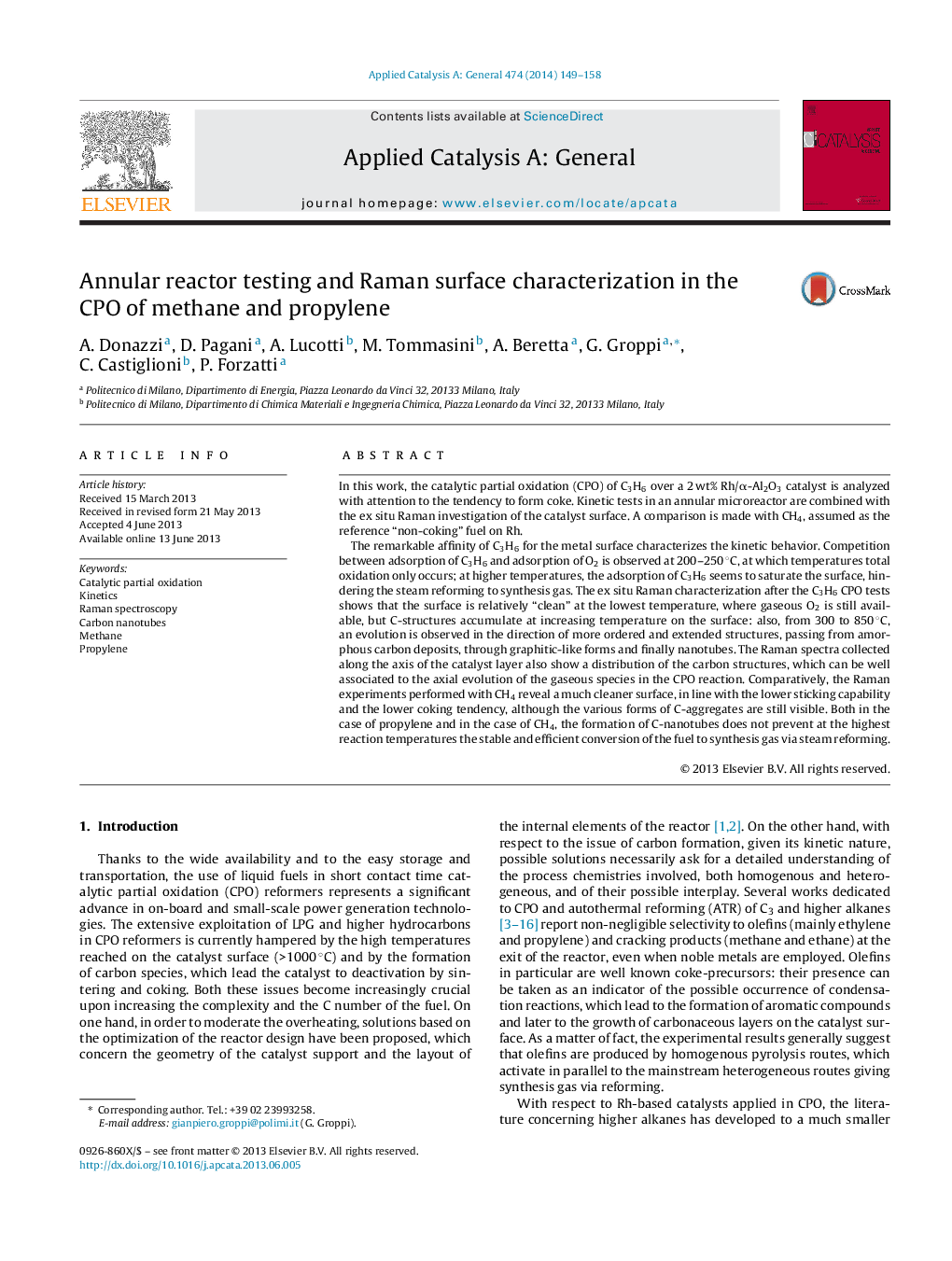| کد مقاله | کد نشریه | سال انتشار | مقاله انگلیسی | نسخه تمام متن |
|---|---|---|---|---|
| 39935 | 45840 | 2014 | 10 صفحه PDF | دانلود رایگان |

• Carbon-formation tendency of C3H6 in the CPO reaction over Rh/α-Al2O3 catalysts is analyzed.
• The high affinity of C3H6 for the Rh metal surface clearly emerges from the kinetic tests.
• Ex situ Raman experiments reveal that different carbon species forms on the catalyst surface.
• The evolution observed follows the direction of increasingly ordered C-structures upon increasing the temperature.
In this work, the catalytic partial oxidation (CPO) of C3H6 over a 2 wt% Rh/α-Al2O3 catalyst is analyzed with attention to the tendency to form coke. Kinetic tests in an annular microreactor are combined with the ex situ Raman investigation of the catalyst surface. A comparison is made with CH4, assumed as the reference “non-coking” fuel on Rh.The remarkable affinity of C3H6 for the metal surface characterizes the kinetic behavior. Competition between adsorption of C3H6 and adsorption of O2 is observed at 200–250 °C, at which temperatures total oxidation only occurs; at higher temperatures, the adsorption of C3H6 seems to saturate the surface, hindering the steam reforming to synthesis gas. The ex situ Raman characterization after the C3H6 CPO tests shows that the surface is relatively “clean” at the lowest temperature, where gaseous O2 is still available, but C-structures accumulate at increasing temperature on the surface: also, from 300 to 850 °C, an evolution is observed in the direction of more ordered and extended structures, passing from amorphous carbon deposits, through graphitic-like forms and finally nanotubes. The Raman spectra collected along the axis of the catalyst layer also show a distribution of the carbon structures, which can be well associated to the axial evolution of the gaseous species in the CPO reaction. Comparatively, the Raman experiments performed with CH4 reveal a much cleaner surface, in line with the lower sticking capability and the lower coking tendency, although the various forms of C-aggregates are still visible. Both in the case of propylene and in the case of CH4, the formation of C-nanotubes does not prevent at the highest reaction temperatures the stable and efficient conversion of the fuel to synthesis gas via steam reforming.
Figure optionsDownload high-quality image (140 K)Download as PowerPoint slide
Journal: Applied Catalysis A: General - Volume 474, 22 March 2014, Pages 149–158